Getting into the basics for lgbtq+ youth health including sexual Health
Here you will find (click to jump to section):
Terms
Note this is not all encompassing and some folx use terms differently. Consider the Human Rights Campaign Glossary of Terms as another reliable source.
-
Acronym for sexual orientation (who an individual is attracted to romantically/physically) gender identity (how some describes their gender regardless of anatomy) and expression (how someone expresses their gender)
Why collect? Collected to guide individualized care and health disparity data tracking
Often collected in the demographics section of the EHR and linked to pronouns
-
Words used to describe one’s self regardless of anatomy such as he, she, they
Consider Pronouns.org as a resource to learn more
Why Collect? Ask every patient their pronouns, use them consistently, and document accurately. This acts to disrupt assumption and biases while empowering personalized connection.
PRO TIP: When working with youth (and others) that come to a visit with a caregiver/parent consider asking pronouns a second time privately. Your patient may not be out to their parent(s) for example.
Strategy Session: How to get pronouns - “Hi I am Dr. Knight. I use they/them pronouns. How can I best address you?”
Often collected in the demographics section of the EHR and linked to SOGIE
-
Inclusive umbrella term for individuals whose sexual orientation, gender identity, or expression differs from majority norms (e.g., LGBTQ+ populations)
May also hear terms such as “gender diverse” as a way to step back from the work minority and its stigmas
-
Public health term describing males who engage in sexual activity with other males, regardless of their sexual orientation (e.g., gay, bisexual, straight)
Why collect? Used for behavioral risk assessment (STIs, HIV, etc.) and recognizes sexual behavior diversity beyond labels & stigmas
-
Public health term describing females who engage in sexual activity with other females, regardless of their sexual orientation (e.g., lesbian, bisexual, straight)
Why collect? Used for behavioral risk assessment (STIs, HIV, etc.) and recognizes sexual behavior diversity beyond labels & stigmas
-
An inclusive umbrella term for sexual and gender identities outside heteronormative or cisnormative and binary categories (e.g. genderqueer)
CAUTION -Historically Derogatory Term - Some reclaim it positively, others may not identify with it; always confirm patient preference
If patient states they are queer consider a follow up question to confirm if this is reference to their sexual orientation or gender or both “Tell me more about what your queer identity includes”
-
A person emotionally, romantically or sexually attracted to more than one gender, though not necessarily simultaneously, in the same way or to the same degree.
Sometimes used interchangeably with pansexual.
Consider This - Bi Erasure (Bisexual Erasure) = The tendency to ignore, deny, or misrepresent bisexual identities in healthcare, research, or social contexts leads to invisibility and gaps in care.
-
An umbrella term used to describe an individual whose gender identity is different than what was assigned at birth
Includes transgender women (assigned male at birth however are women), transgender men (assigned female at birth however are men), nonbinary, genderfluid, genderqueer etc.
Latin root Trans = “across from” or “opposite of” VS. Cis = “same as”
These folx may or may not pursue social, medical, or surgical gender affirmation
-
Individuals who are not exclusively male or female in their gender identity.
They may used terms such as nonbinary, genderqueer, agender, or genderfluid to self describe
-
A medical term used to describe individuals born with variations in sex characteristics (chromosomes, hormones, gonads, or anatomy) that do not fit historical definitions of male or female
CAUTION - Avoid outdated and stigmatizing language such as hermaphrodite
Cultural Competency with a Queer Lens
Use inclusive, gender-neutral language (e.g., “partner” instead of “boyfriend/girlfriend”) and ask what terms individuals use do not assume.
Ask about sexual orientation and gender identity, never assume.
Avoid outdated or stigmatizing terms; use patient-chosen name and their pronouns. Be sure to share yours as well.
Recognize LGBTQ+ people exist across all races, religions, and socioeconomic backgrounds.
Create visibly inclusive spaces (rainbow symbols, inclusive brochures, pronoun badges).
Include SOGIE and pronoun options on intake forms and EHRs.
Train all staff — clinical and administrative — in affirming and trauma informed communication.
Acknowledge past negative healthcare experiences; build trust through respect and privacy.
Explain confidentiality and nondiscrimination policies at each visit.
Screen routinely for depression, anxiety, trauma, and substance use.
Provide comprehensive sexual health screening based on anatomy and behaviors, not identity.
Address health disparities and minority stress as core clinical concerns.
Offer referrals to LGBTQ+ affirming specialists and community resources.
Practice cultural humility, ongoing learning, self-reflection, and openness to feedback.
Affirm identity, do not pathologize it.
Inclusive Conversation starters for sexual health:
When it comes to talking about sex and sexual health histories consider:
Asking about behaviors, not labels (oral, anal, genital, toy use, etc.).
Use anatomy-based questions to determine appropriate STI screening sites.
Discuss pregnancy potential and contraception when relevant.
Include conversations on pleasure, consent, and safety.
Recommend safer-sex practices: condoms, internal condoms, dental dams, lube.
Avoid assumptions based on gender identity or appearance.



